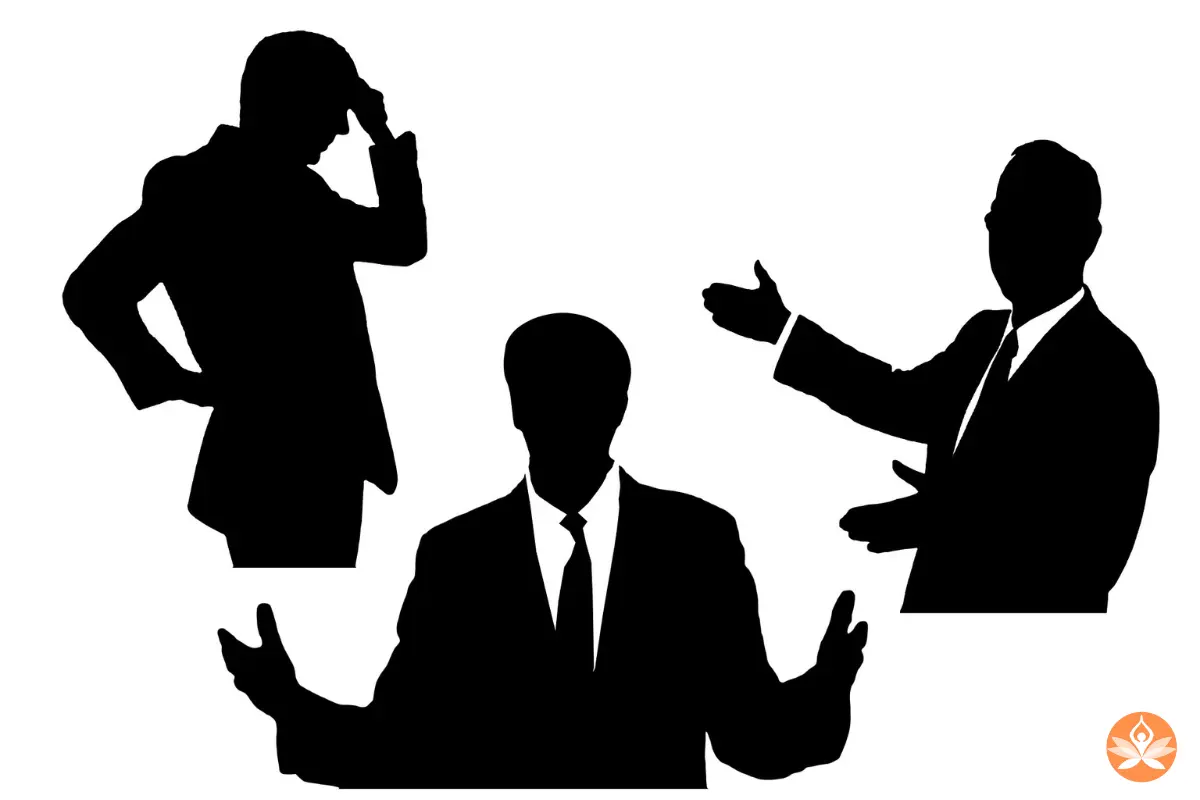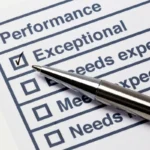1.Introduction
Body language is a powerful tool that goes beyond words to convey emotions, thoughts, and intentions. It is the non-verbal communication that accompanies our verbal exchanges, often speaking louder than the words themselves. Understanding and mastering body language can significantly impact how others perceive us and how we perceive ourselves. This article delves into the role of body language in shaping our mindset, exploring its psychological foundations, cultural variations, and practical applications in both personal and professional settings.
2. The Science Behind Body Language
Psychological and Neurological Foundations
Non-Verbal Communication is deeply rooted in our psychology and neurology. The way we position our bodies, our facial expressions, and even our gestures are all controlled by complex neural networks in the brain. These networks interpret both our internal emotional states and external stimuli, making our physical expressions a reflection of our subconscious mind.
How Body Language Influences the Brain
Research shows that non-verbal communication can influence our brain’s chemistry and neural pathways. For instance, adopting a “power pose”—such as standing with hands on hips—can increase testosterone levels, reduce cortisol, and boost confidence. This is a clear example of how physical gestures can shape not only our mindset but also our physiological state.
3. Types of Body Language
Positive vs Negative Non-Verbal Communication
Positive body language includes gestures, expressions, and postures that convey openness, confidence, and approachability. This contrasts with negative non-verbal signals, which can indicate discomfort, defensiveness, or hostility. Recognizing and utilizing positive physical cues can help in fostering positive interactions and a more optimistic mindset.
Body Language and Their Meanings
Non-verbal cues, such as eye contact, facial expressions, and posture, play a crucial role in communication. For example, maintaining eye contact can signify interest and confidence, while slouching may indicate disinterest or lack of self-esteem. Understanding these cues can help in adjusting your body language to convey the desired message.

4. Impact of Body Language on Self-Perception
The Power Pose Effect
The concept of “power posing” has gained attention in recent years due to its significant impact on self-perception. By adopting expansive, confident postures, individuals can alter their hormone levels and boost their sense of self-worth. This phenomenon demonstrates how body language not only reflects but also actively shapes our mindset.
How Body Language Affects Confidence
Confidence is often mirrored in non-verbal communication. A person who stands tall, with shoulders back and head held high, is likely to feel more confident than someone who hunches over or avoids eye contact. By consciously adjusting your physical cues, you can influence your self-confidence and project a more assertive image to others.
5. Body Language in Social Interactions
First Impressions
First impressions are largely based on non-verbal cues. In fact, studies suggest that Gestural communication accounts for over 50% of the initial impression we make on others. Therefore, mastering positive physical communication is essential for making a strong, favorable first impression in any social or professional context.
The Role of Body Language in Communication
Effective communication is not just about what we say, but also how we say it.Gestural communication complements verbal communication by adding emphasis, expressing emotions, and reinforcing or contradicting spoken words. Understanding this dynamic can improve both personal and professional relationships by enhancing clarity and understanding.
6. Cultural Differences in Body Language
Cross-Cultural Variations
Physical communication varies significantly across cultures. What is considered a positive gesture in one culture may be seen as offensive in another. For instance, direct eye contact is valued in Western cultures but may be considered rude in some Asian societies. Being aware of these differences is crucial for effective cross-cultural communication.
Misinterpretations and Their Consequences
Misinterpreting non-verbal communication can lead to misunderstandings, especially in multicultural settings. For example, a nod in some cultures signifies agreement, while in others, it might indicate acknowledgment without agreement. Recognizing these nuances can prevent miscommunications and foster better international relations.
7. Body Language and Professional Success
How Physical communication Affects Career Advancement
In the workplace, non-verbal communication can significantly impact career advancement. Positive Body expressions, such as maintaining eye contact, smiling, and using open gestures, can make a person appear more competent and trustworthy. Conversely, negative body language can hinder career progress by creating the impression of insecurity or lack of professionalism.
Body Language in Leadership
Leaders often use non-verbal signals to inspire confidence and command respect. Gestures like open palms, firm handshakes, and purposeful movements can convey authority and decisiveness. Understanding and mastering these cues can be a powerful tool for anyone aspiring to leadership roles.
8. Body Language in Personal Relationships
Building Trust Through Non-Verbal Cues
Trust is the foundation of any strong relationship, and non-verbal communication plays a pivotal role in building it. Open and relaxed postures, along with consistent eye contact, can signal honesty and reliability. In contrast, closed-off gestures, like crossed arms, can create barriers and lead to mistrust.
The Role of Non-Verbal Communication in Conflict Resolution
During conflicts, physical cues can either escalate or de-escalate tensions. Non-threatening gestures, such as open hands and calm facial expressions, can help diffuse situations, while aggressive postures might exacerbate the problem. Being mindful of your non-verbal communication in such scenarios can lead to more constructive outcomes.
9. Training Your Body Language for a Positive Mindset
Techniques for Improving Non-Verbal Communication
Improving body language requires practice and self-awareness. Techniques such as mirroring (subtly mimicking the other person’s gestures) can create rapport, while consciously adopting open and confident postures can improve how you’re perceived by others. Regular practice can make these techniques second nature.
Practicing Mindfulness in Non-Verbal Cues
Mindfulness involves being fully present in the moment, and this can extend to non-verbal communication. By being mindful of your gestures, expressions, and posture, you can ensure that your body language aligns with your intentions and messages. This alignment can foster a positive mindset and improve communication.
10. The Role of Body Language in Mindset Shifts
How to Use Non-Verbal Communication to Change Your Mindset
Body language can be a powerful tool for shifting your mindset. For instance, adopting a confident posture during stressful situations can help calm your nerves and increase your focus. By changing your physical cues, you can influence your emotions and thoughts, leading to a more positive and productive mindset.
Case Studies of Successful Mindset Shifts
Numerous case studies highlight the impact of body language on mindset shifts. For example, athletes often use non-verbal communication techniques to boost their confidence and focus before competitions. These success stories illustrate how intentional changes in physical cues can lead to significant improvements in performance and well-being.
11. Future Trends in Body Language Research
Emerging Technologies and Body Language Analysis
With advancements in AI and machine learning, analyzing non-verbal communication is becoming more sophisticated. Technologies like emotion recognition software and body motion analysis are providing deeper insights into physical cues, offering new opportunities for research and practical applications.
The Future of Body Language in Digital Communication
As digital communication becomes more prevalent, understanding non-verbal signals in virtual settings is becoming increasingly important. The future may see the development of virtual reality and augmented reality tools that can simulate face-to-face interactions, allowing for more nuanced and effective communication in the digital realm.
12. Practical Applications of Body Language Techniques
Non-Verbal Communication Tips for Everyday Life
Incorporating positive body language into your daily routine can have a profound impact on your mindset and interactions. Simple tips like maintaining eye contact, offering a firm handshake, and using open gestures can make a significant difference in how you’re perceived and how you feel.
Implementing Positive Body Language in the Workplace
In the workplace, positive non-verbal communication can enhance teamwork, leadership, and overall productivity. By being mindful of your physical cues, you can create a more positive work environment, foster better relationships with colleagues, and advance your career.
13. Expert Insights
Quotes and Opinions from Leading Psychologists
Leading psychologists emphasize the importance of body language in shaping mindset. Dr. Amy Cuddy, for example, highlights the “power pose” as a tool for building confidence and reducing stress. Such insights underscore the critical role of physical cues in personal and professional success.
Relevant Case Studies
Case studies from various fields, including sports, business, and therapy, demonstrate the effectiveness of non-verbal communication techniques in improving mindset and performance. These real-world examples provide valuable lessons and inspiration for applying body language strategies in your own life.
14. FAQs
Common Questions About Body Language
What is the most powerful non-verbal communication technique for boosting confidence? The “power pose” is widely regarded as one of the most effective techniques for boosting confidence.
How does body language differ across cultures? Non-verbal communication varies significantly across cultures, with gestures and expressions having different meanings in different societies.
Can body language really change your mindset? Yes, studies have shown that adopting certain non-verbal communication techniques can positively influence your mindset and emotions.
Expert Answers and Practical Advice
Experts agree that being aware of and practicing positive physical communication can lead to significant improvements in both personal and professional areas of life. It’s important to stay mindful of cultural differences and to practice these techniques regularly for the best results.
15. Conclusion
Body language is a powerful tool that shapes not only how others perceive us but also how we perceive ourselves. By understanding and mastering non-verbal cues, you can significantly enhance your communication skills, build stronger relationships, and foster a positive mindset. Start practicing these techniques today and experience the transformative power of body language in your life.r life.










